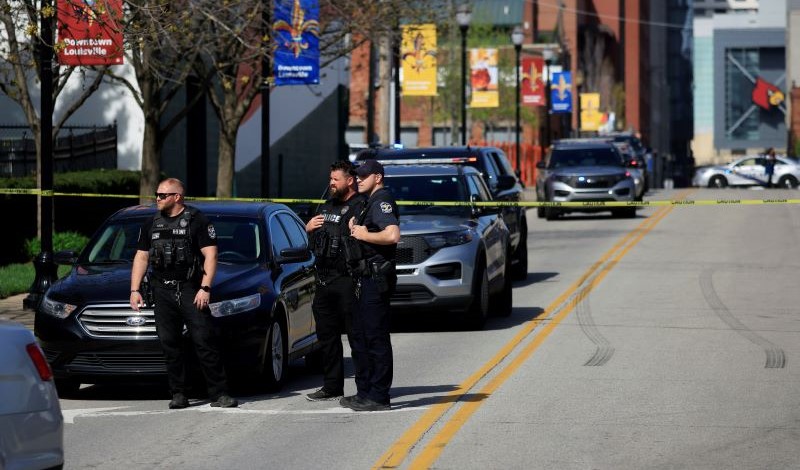
Scholars discuss regulating to help ensure accountability for police misconduct.
Last month—after the Department of Justice controversially recommended a strictly probational sentence—a federal judge sentenced former Louisville officer Brett Hankison to 33 months in prison for civil rights violations leading to the shooting and killing of Breonna Taylor. Only weeks prior, U.S. Representative Ayanna Pressley (D-MA) formally reintroduced legislation abolishing qualified immunity. And, after an April Supreme Court decision, Ohio voters are now cleared to collect signatures for a constitutional amendment to eliminate the doctrine at the state level.
For decades, reformers and policymakers have tried to curb police misconduct by proposing legislation to rewrite use‑of‑force rules, mandate police use of body cameras, and expand the collection of data related to police misconduct. Even clear footage or well-documented reports may fail to lead to officer prosecution due to administrative processes that can cause misconduct cases to stall, be reduced in scope, or be dismissed. Recent scholarship highlights weaknesses in the regulation of police misconduct, proposing—and critiquing—reforms needed to overcome barriers to accountability.
Qualified immunity stands as an important barrier to accountability for police misconduct. Empirical studies show lower courts rarely pierce this defense even when misconduct seems obvious, prompting proposals to create a statutory carve‑out to keep civil claims alive without abolishing the doctrine. Critics counter that any federal changes to qualified immunity doctrine must harmonize with state indemnification rules to avoid bankrupting local governments.
Moreover, scholars critique criminal statutes of limitations that often expire before officer wrongdoing surfaces, arguing that pausing or abolishing these limits would prevent serious offenses from aging into impunity. Others warn that expanding limitation periods risks broadening the carceral effects of American criminal law—doing to police what they do to so many others—unless such changes are paired with non‑punitive remedies and clear charging standards.
Apart from statutory protections, scholars also point to structural and resource-based limitations like understaffed civilian oversight boards as critical regulatory barriers to effective police accountability. Most notably, oversight boards draw attention to civilian oversight boards that may lack the staff to finish investigations before internal or statutory deadlines run out. Evidence from studies of several large jurisdictions suggests that the number of cases handled by each investigator, not merely formal statutory authority, determines whether complaints reach a charging decision.
In addition, a growing body of research shows that police rarely move between departments, insulating departments from each other and entrenching departmental cultures over time. Policy analysts debate the design of a national licensure or decertification registry. Some envision a seamless interstate database to prevent such insulation, while others caution that poorly crafted registries could shift liability without improving hiring standards.
Finally, labor scholars highlight union contracts and arbitration provisions that help to overturn or otherwise soften disciplinary decisions. New state legislation in New York, Oklahoma, and Indiana seeks to add additional restrictions by limiting what police may collectively bargain for, but opponents argue that overriding collective bargaining in this fashion may chill recruitment or violate constitutional guarantees of association.
In this week’s Saturday Seminar, scholars discuss how legislators and regulators can dismantle these overlapping accountability shields.
- In an article in the Ohio State Law Journal, Anjelica Hendricks of the University of Pennsylvania Carey Law School asserts that statutes of limitations prevent prosecution in 76.6% of police crimes. Using an original dataset of 838 police misconducts drawn from wrongful conviction cases, Hendricks finds that prosecutors brought charges in just 146 cases and 642 misconducts were barred by statutes of limitations. She argues that states should consider removing statutes of limitations for police misconduct to permit greater prosecution of officers who torture, fabricate evidence, and commit perjury. Hendricks contends that prosecuting police crimes serves important expressive value in acknowledging victim harm through tangible accountability and can help identify additional wrongful conviction cases.
- In a response to Anjelica Hendricks’ Tolling Justice published in the Ohio State Law Journal Online, Kate Levine of the Benjamin N. Cardozo School of Law argues that extending statutes of limitations for police crimes risks expanding the carceral state. Levine contends that proposals to eliminate statutes of limitations for police crimes could easily be applied to other conduct considered under prosecuted or committed by offenders seen as particularly privileged. She notes that similar arguments were made as a part of successful efforts to expand the statutes of limitation in numerous states for sexual offenders. Levine concludes that increasing criminal prosecutions, no matter how well-intentioned the goal, is not a tenable solution to the problem of overincarceration.
- In a report published by Community Change and the Center for Labor and a Just Economy at Harvard Law School, William Jones of the University of Minnesota contends that police unions misuse collective bargaining to resist reform. Jones argues that the application of collective bargaining by police unions fosters a general skepticism of both the practice of collective bargaining and public sector unions, weakening the national labor movement. To avoid this effect and advance police reform, Jones calls for increased transparency in collective bargaining by police unions and fewer disciplinary and supervisory policies to be at stake in such bargaining. He further argues for reforming police arbitration and discipline to make those procedures responsive to popular demands for reform.
- In an article in the New York University Law Review, Jonathan Masur and John Rappaport of the University of Chicago Law School and Aurélie Ouss of the University of Pennsylvania argue that low labor mobility in policing undermines accountability and thwarts attempts to reduce police misconduct. Masur, Rappaport, and Ouss present data showing that officers rarely switch employers, pointing to structural barriers like including pension lock-ins, union contracts, and seniority rules. The authors propose targeted policy changes, including allowing officers to bring their pension and retirement credits with them when they switch departments. They argue that these reforms would allow officers leave troublesome departments more easily, giving officers leverage over police departments to withhold talent.
- In a study published in the N.Y.U. Journal of Legislation & Public Policy, Sharon Fairley of the University of Chicago Law School argues that the timeliness of police misconduct investigations by civilian oversight agencies depends less on statute than on resourcing. Drawing on data from agencies across the country, Fairley finds that a higher number of caseloads per investigator correlates with lapsed investigations and missed opportunities for discipline, with delays more common in cases involving the most serious allegations. Fairley contends that reforms expanding civilian oversight in agencies or filing deadlines would be ineffective without budgetary changes. She instead calls for funding schemes to be tied to staffing ratios, emphasizing that personnel capacity as a requirement for meaningful police accountability.
- In an article in the Washington Law Review, Bailey Barnes of the University of Washington examines how courts apply the “obvious violation” exception to qualified immunity first recognized in Taylor v. Riojas. Barnes reviews over two hundred post-Taylor decisions, finding that courts rarely allow plaintiffs to proceed under this exception and often fail to articulate consistent standards. Arguing that this doctrinal vagueness prevents meaningful accountability in civil rights cases, she recommends codifying a clear statutory carveout for plaintiffs to pursue their suits. In Barnes’s view, narrowly tailoring the exception to egregious misconduct would allow meritorious claims to survive dismissal even without a factually identical precedent, thereby offering a more reliable pathway to redress without fully repealing qualified immunity.



